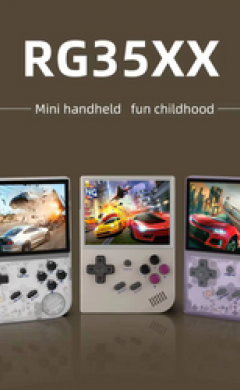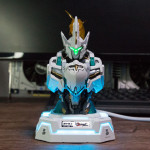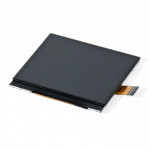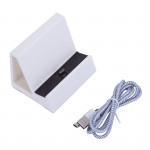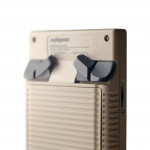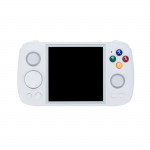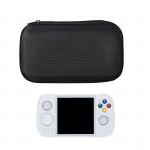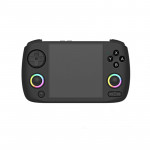GKD Pixel: 7 Months Later
GKD Pixel: 7 Months Later
When it was first released in January of this year, the GKD Pixel wasn't very well-liked. It was too costly, the hardware was outdated, and you could feel the device warming up in your fingers if you pushed it hard. By the time August rolls around, none of those issues have been resolved; that's how the gadget works. However, three more compact handhelds have entered the market: the 28XX, Miyoo A30, and XU Mini M.
Although each of those three has a distinct function and will be discussed later, the GKD Pixel is the only vertical of the small group and comes with a smaller 2.4" display. How is it now, seven months later? Can I suggest something? Let's discuss it in what I refer to as a more concise review.
Specs
- Display: 2.4" IPS Panel
- Resolution 320×240 (4:3 Display)
- Processor: Ingenic X1830
- GPU: N/A
- Ram: 128MB
- Battery: 1,300mAh
- Extras: No Wifi, 1x USB-C Port, 1x Micro SD Slot, 1x 3.5mm Headphone Jack
- Dimensions: 80x56x18mm
- Weight: 106 grams
- Colours: Green, Gray, Purple, Red, Blue, Yellow, Black
I'll start by taking care of the crucial things. Although it's not very good, the little, low-resolution panel works well for such a small screen. By now, the processor is outdated. The GKD 350H and GKD Mini, which were released in December 2019 and March 2021, respectively, previously demonstrated it. Since there isn't a specialized GPU, you can presume it's only as good as the PS1, but you'll also struggle with some challenging SNES games.
However, the sturdy structure and compact dimensions more than makeup for that. This device's weight is in the same range as my other small handhelds.
- Playdate – 85 Grams
- GKD Mini – 106 Grams
- Miyoo Mini – 107 Grams
- Miyoo A30 – 113 Grams
- RG28XX – 126 Grams
It's nothing noteworthy overall, but it does the job.
Ergonomics and Controls
Half of this is simple right away. Unfortunately, it won't be as pleasant as the Miyoo A30 or the RG28XX because it's a bit vertical. Because of its size, I find it less comfortable than the Miyoo Mini. One factor that makes it worthwhile for me is how simple it is to play games with one hand.
I've heard folks discuss the Miyoo Mini, but reaching my thumb that far was always difficult for me, and the RG Nano was the exact opposite. I'd be on the face buttons, covering them all at once. This is the way to go if you're looking for a reliable one-handed gadget for role-playing games or anything comparable.
What about the buttons? They are acceptable. Although the shoulder buttons click, R1 and L1 slip out of place with minimal pressure. The metal casing slightly rattles the face buttons in addition to their pleasant thud. In addition, the D-pad is good. In approximately one minute and thirty-six seconds, I used Pico-8 to reach the monument in Celeste without suffering any fatalities. Stubbs, take that.
CFW and Performance
Regarding the operating system, there is only one correct response to this question. MinUI. It eliminates much of the tweaking I didn't want to do with this and improves the user experience, even if it has fewer systems. The Game Boy, Game Boy Color, Game Boy Advance, NES, SNES, Genesis, and PS1 are all included in the box. However, you can add a variety of arcade emulators, including my favourite, Pico-8, if you manage to get the RetroGameCorps add-on.
Regarding performance, I'll reiterate what I've already mentioned. Almost everything with the add-on pack and the MinUI firmware will function flawlessly. The PS1 will be difficult to use, so don't play it here if you truly need a joystick. But generally speaking, you'll be pleased with the performance if you put it on.
It's important to note that Pico-8 only offers the Fake-08 emulator; official Pico-8 is not available. Even though it functions well in that version, you will experience more audio problems than a more capable device. For instance, I occasionally heard a high-pitched ping while playing Celeste 2.
If it speaks for itself, the microSD card reader's spring tension was the one aspect of its performance that I found really impressive. More times than I'd like to admit, I threw that card into my eye or a few feet away.
Final Thoughts
I can state right away that MinUI saved this device, and Russ from RetroGameCorps' add-on pack also played a significant role. This wouldn't be a worthwhile product to suggest without those. And if I do suggest it at all, not for seventy to eighty dollars. Yes, it is small, portable, and made of metal, but unless you need those features, you would be better off investing your money elsewhere.
The Miyoo Mini V4 works better as a vertical, whereas the TrimUI Smart, RG28XX, and Miyoo A30 are all excellent minis in a horizontal setting. But they're all bigger. Suppose you require a rugged shell for PS1 gameplay. This is a better option than the RG Nano. If not, it's most likely a skip. But me? I'm going to put this in my backpack's sunglasses pocket. It will work well as a travel gadget and has a good standby battery life. I can achieve this because I am careless and purchase 68 handhelds at once.
